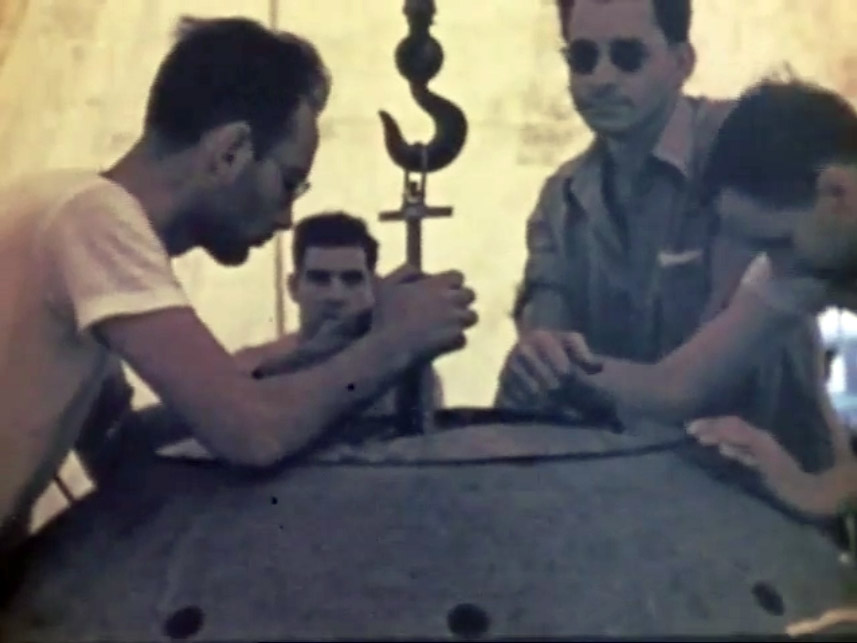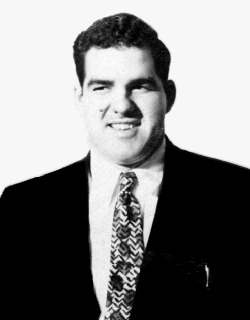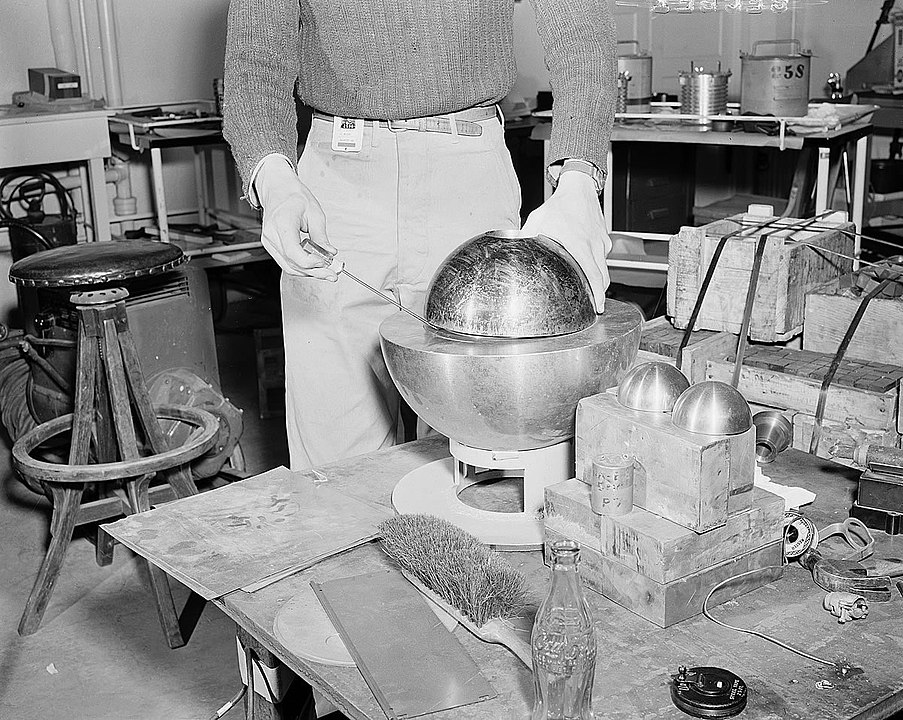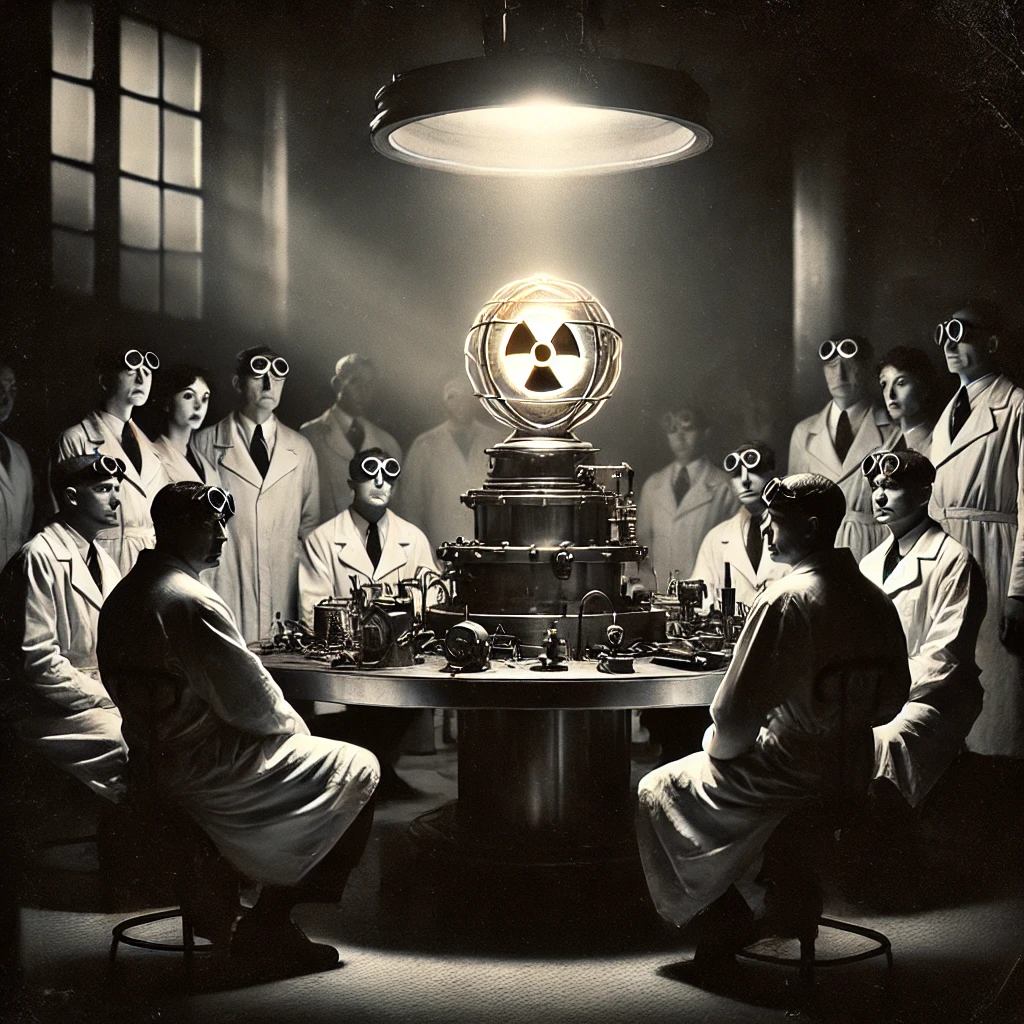The Demon Core: Hell in the Hands of Man
Los Alamos, New Mexico – May 21, 1946
The air in the laboratory was charged with electricity, as if time itself held its breath. The neon lights cast cold shadows on the metal walls, while the ticking of instruments marked the passing seconds. At the center of the room, on a stainless steel table, lay a perfect sphere, gleaming under the sterile lamp’s reflections. A plutonium heart, a fragment of hell trapped in matter.
Louis Slotin, the Canadian physicist with expert hands and too much confidence, took a screwdriver. It was the only thing standing between humanity and the abyss. A tiny mistake, a millimeter too far… But Slotin was sure of himself. He had done this dozens of times. A swift movement, the screwdriver as the sole guardian of life.
The metal slipped.
A blue flash erupted in the room, engulfing the scientists in an otherworldly glow. Time seemed to freeze. Slotin felt the heat consuming him from within, an invisible wave that tore through his flesh and corrupted every cell in his body. “I’m dead,” he muttered, a macabre smile on his lips. He had only days left. He knew it.
Thus, the Demon Core claimed another soul.

The two physicists Harry Daghlian (center left) and Louis Slotin (center right) during the Trinity Test. Both died following supercritical accidents involving the "demon core."
The Cursed Core
Before becoming legend, the Demon Core was just another creation of science. Forged at the heart of the Manhattan Project, it was meant to be the third atomic bomb dropped on Japan after Hiroshima and Nagasaki. But the war ended before it could unleash its firestorm.
Yet, death followed it.
It was repurposed for criticality experiments, deadly tests where scientists played with the thresholds of destruction. The danger was well known, but human arrogance outweighed fear. Man had learned to bend the atom to his will, but the Demon Core would not yield without demanding tribute.
The First Victim: Harry Daghlian
 August 21, 1945. Night. Solitude.
August 21, 1945. Night. Solitude.
Harry Daghlian wandered through the dimly lit laboratory, his breath heavy in the eerie silence of Los Alamos. He was conducting an experiment alone, against all protocol. He knew the risks, but the pursuit of knowledge was too seductive. He took a tungsten carbide brick and slowly moved it closer to the plutonium core.
His fingers slipped. The block fell.
A lethal glow illuminated the room, a whisper of death spreading through the silence. Daghlian recoiled, his heart pounding, but the invisible poison had already touched him. His body became the stage for a slow agony. His blood rebelled, his cells began to break down. After 25 days of torment, the Demon Core took its first victim.
The Final Fate of the Demon Core
After Slotin’s death, the Demon Core was sealed away. No one dared touch it again; no one wanted to be the next name on the list of the damned. It was supposed to be used in Operation Crossroads, the Bikini Atoll nuclear tests, but fate spared it.
In the summer of 1946, it was melted down, its power distributed into other bombs. The Demon Core ceased to exist as a single entity, but its name became legend. It never exploded, yet it killed. Not with a detonation, but with the silent touch of radiation, an invisible assassin hiding within a perfect sphere.
Was it just science? Or a curse, forged in the fury of man?
The answer still lingers in the Los Alamos laboratories, where the shadow of the Demon Core continues to whisper.

A re-creation of the 1946 experiment. The half-sphere is seen, but the core inside is not. The beryllium hemisphere is held up with a screwdriver.
Sources
The New Yorker: Demon Core: The Strange Death of Louis Slotin
Wikipedia: Demon core
American Physical Society: May 21, 1946: Louis Slotin Becomes Second Victim of “Demon Core”
HowStuffWorks: The Demon Core: A Tale of Atomic Ambition and Tragic Fate








Leave a Comment